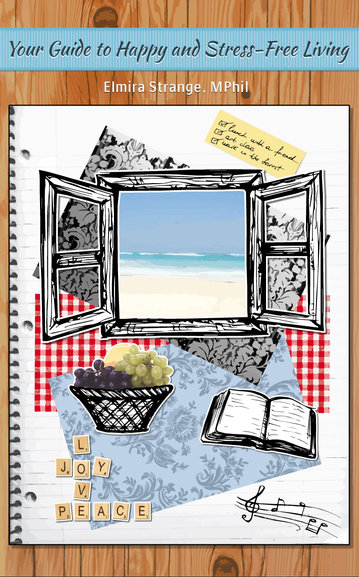DREAMS
What are our dreams?
Most of us dream. Some dream occasionally and others dream regularly and vividly.
by Elia Strange

There are many theories about why people dream.
Some people say our
dreams link us to our spiritual side of life, where we can see what will
happen to us in the future and where we can meet with those who are not
with us anymore.
Others think that our brains try to solve challenges
and puzzles that we have from our daily activities, and this is why when
people have some decision to make, they decide to ‘sleep on it’. And
surely enough, in the morning it’s all seem much clearer and you often
know what decision to make.
Dreams involve imagery and some feel very real to us.
Other dreams just do not make any sense and can involve scenes, times
and people from our past and present – all in the same scenario. It can
make you wonder – who can we wake up refreshed after this kind of
dreams?
Psychologists say we dream vividly during certain
cycles of our sleep – REM sleep. You might have about five sleep cycles
in the eight hours of sleep, and that means that you’ll probably have
five different dreams.
Each dream lasts only 10-15 minutes, but when we are ‘in the dream’ it might seem that days, weeks or even months passed. You dreams might be in black and white or in full colours.
WHAT OUR DREAMS MADE OF
Some psychologists, for example Reiser (1992), say that most of our
dreams are ‘simple extensions of the activities and problems of the
day’.
You are more likely to dream about things that you were preoccupied with,
for example, someone’s illness or death, sexual and aggressive urges,
wishes and goals, and so on. People that appear in our dreams are those
who we know, not monsters and superheroes.
Sigmund
Freud’s theory was that dreams contain our unconscious wishes and urges,
mostly of the sexual meaning. Have a look at his dream symbols that
were used for many years by some psychologists:
Symbols for the Male Genital Organs:
- airplanes
- bullets
- feet
- fish
- fire
- hands
- hoses
- knives
- neckties
- poles
- snakes
- sticks
- tools
- trains
- trees
- umbrellas
- weapons
Symbols for the Female Genital Organs:
- bottles
- boxes
- cases
- caves
- chests
- closets
- doors
- hats
- jars
- ovens
- pockets
- pots
- ships
- tunnels
Symbols for Sexual Intercourse:
- climbing a ladder
- climbing a staircase
- crossing a bridge
- driving an automobile
- riding an elevator
- entering room
- flying an airplane
- riding a horse
- riding a roller coaster
- walking into a tunnel or down a hall
Symbols for the Breasts:
- apples
- peaches
So what do you think?
Was he totally mad or is there some truth to it?
It
seems that most symbols for the male genital organs include pointy
objects, whereas for the female ones the objects have lids or doors.
What
about his symbols for sexual intercourse?
Do you think that driving an
automobile or flying in an airplane mean your sexual urges or they
merely signify some of your fears?
NIGHTMARES
Have you ever had a dream as if someone or something is sitting
heavily on your chest and that you cannot do anything about it?
And
this something or somebody is watching you?
You cannot move as if you’ve
become paralised but you realise that whatever is happening is
terrifying and you really need to wake up though you can’t.
Particularly
in the Middle Ages, and even these days, according to some people
interested in paranormal phenomena, nightmares are often a work of
demons and other negative spirits. It is believed that these negative
spirits may have sexual intercourse with you and during this act they
steal some of your vital life energy.
Psychologists say
that nightmares are the products of our mind, similarly to other more
pleasant dreams. If you had a recent traumatic event or if you are a
person who is anxious and/or depressed, then you are more likely to see
nightmares.
If you do suffer from regular nightmares and
insomnia, have a look here at the recommendations on how to have a good
night sleep.
Also, I have recently read somewhere that if you suffer
from nightmares where you become paralised, try to put your pillows
higher. For example, sleep on two pillows if you can. I’m not sure the
exact reason for that, but it helps me…
Other articles you might be interested in:
How to get a good night sleep
Do I have a sleep disorder?
Why am I sleeping too much?
... or go to:
Archives of all articles
Archives (Page 2)
Coping with Stress (HOME PAGE)
'What are our dreams' Article Reference:
Rathus, A.S. (1999). Psychology in the new millennium. (7th ed.). Orlando, FL: Harcourt Brace College Publishers.
Or follow me on Twitter and Google+ by clicking on the symbols below:
Sign
up below to receive my free email newsletter with new fresh articles to
help you to become healthier and happier.
It's sent about once a month.
No spam. No
sharing of your email address. Easily unsubscribe at any time.
Best Articles:
10 tips to strengthen your marriage
Best ways to manage your stress
How to get what you want (the Law of Attraction)
Why do I need to eat healthy?
Signs and stages of stress
13 Facts about sugar addiction
7 Reasons for our unhappiness
Why people commit suicide
How to get a good night sleep
Try these Tests and Quizzes:
Is it time to take stress seriously?
How well do you know yourself?
Can you talk to teenagers?
Do you have a time to recreate?
Can you cope with stress well?
The Latest Articles:
Green Smoothie Recipe
Stress in Parents and Carers of disabled children (VIDEO)
Did you find your dream job yet?
Is an eye mask good for sleeping?
How to look and appear confident
Why am I tired all the time?
Exercise tips: 8 easy ideas for losing weight and become fitter
15 Sure signs that you are stressed
Are memory foam mattresses worth it?
How stress affects your health: What stress is doing to your body
How to get what you want (the Law of Attraction)
How to be more patient
How to deal with SAD: Autumn depression
How to stop negative thinking
How bad is your memory? (Fun Quiz)
What is love - in children words
How to make people like you?
Why do I forget things?
10 Tips to strengthen your marriage
Would you move abroad?
Are holidays worth it?




New! Comments
Have your say about what you just read! Leave me a comment in the box below.